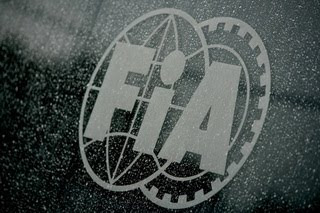Under new moveable bodywork regulations for next season, drivers will be able to adjust the rear wing from the cockpit as soon as they are two laps into the race. However, the system’s availability will be electronically controlled and it will only be activated when a driver is less than one second behind another at pre-determined points on the track. The system will then be deactivated once the driver brakes. It will be available at all times throughout practice and qualifying.
In a move that could frighten one or two of the new teams, next year any driver not setting a qualifying time within 107% of the fastest Q1 lap will not be permitted to race. Stewards, however, will have the power to grant exceptions in extenuating circumstances, such as where a driver has recorded a suitable time in a previous practice session.
Several other measures have been brought in with immediate effect. Following the late-race confusion at Monaco, where Michael Schumacher passed Fernando Alonso, the safety-car rules have been clarified. No overtaking is allowed if the safety car is on track on the final lap.
And following the spectacle of Lewis Hamilton pushing his fuel-light McLaren back to the pits at the end of Montreal qualifying, new rules state that cars required to give a post-session fuel sample must arrive back in pit lane under their own power.
Wednesday's World Motor Sport Council decisions in full:
Tyres
Pirelli has been selected as the single tyre supplier for the FIA Formula One World Championship for a period of three years, commencing in 2011. The sole supplier will undertake to strictly respect the sporting and technical regulations implemented by the FIA.
“Competitor’s staff” FIA Licence
A proposal relating to specific licences for members of staff of competitors entered in the FIA World Championships has been submitted to the Formula One Commission. This is under consideration for implementation in the FIA Formula One World Championship from the start of 2011, with a view to inclusion in other FIA World Championships in the future.
Safety Car
With immediate effect, no car may overtake until it has passed the first safety car line for the first time when the safety car is returning to the pits. However, if the safety car is still deployed at the beginning of the last lap, or is deployed during the last lap, it will enter the pit lane at the end of the lap and the cars will take the chequered flag as normal without overtaking.
General safety
With immediate effect, any car being driven unnecessarily slowly, erratically, or which is deemed potentially dangerous to other drivers, will be reported to the stewards. This will apply whether any such car is being driven on the track, the pit entry or the pit lane.
In order to ensure cars are not driven unnecessarily slowly on in-laps during qualifying or reconnaissance laps when the pit exit is opened for the race, drivers must stay below the maximum time set by the FIA between the safety car line after the pit exit and safety car line before the pit entry. The maximum time will be determined by the race director at each event prior to the first day of practice, but may be amended during the event if necessary.
The grid
From 2011, any driver whose best qualifying lap exceeds 107% of the fastest Q1 qualifying time will not be allowed to take part in the race. Under exceptional circumstances, however, which may include setting a suitable lap time in a free practice session, the stewards may permit the car to start the race. Should there be more than one driver accepted in this manner, the grid order will be determined by the stewards.
Driver adjustable bodywork
From 2011, adjustable bodywork may be activated by the driver at any time prior to the start of the race and, for the sole purpose of improving overtaking opportunities during the race, after the driver has completed two laps. The driver may only activate the adjustable bodywork in the race when he has been notified via the control electronics that it is enabled. It will only be enabled if the driver is less than one second behind another at any of the pre-determined positions around each circuit. The system will be disabled the first time the driver uses the brakes after the system has been activated. The FIA may, after consulting all the competitors, adjust the time proximity in order to ensure the purpose of the adjustable bodywork is met.
Aerodynamic influence
With the exception of the parts necessary for the driver adjustable bodywork, any car system, device or procedure which uses driver movement as a means of altering the aerodynamic characteristics of the car is prohibited from 2011.
Weight
From 2011, the minimum weight of the car must not be less than 640 kg at all times during the event.
Fuel draining
With immediate effect, if a sample of fuel is required after a practice session the car concerned must have first been driven back to the pits under its own power.
Licences
Based on his career résumé and comparative F1 testing times, the World Council has approved the granting of a four-race probationary super license to Chinese driver Ho-Pin Tung.



No comments:
Post a Comment